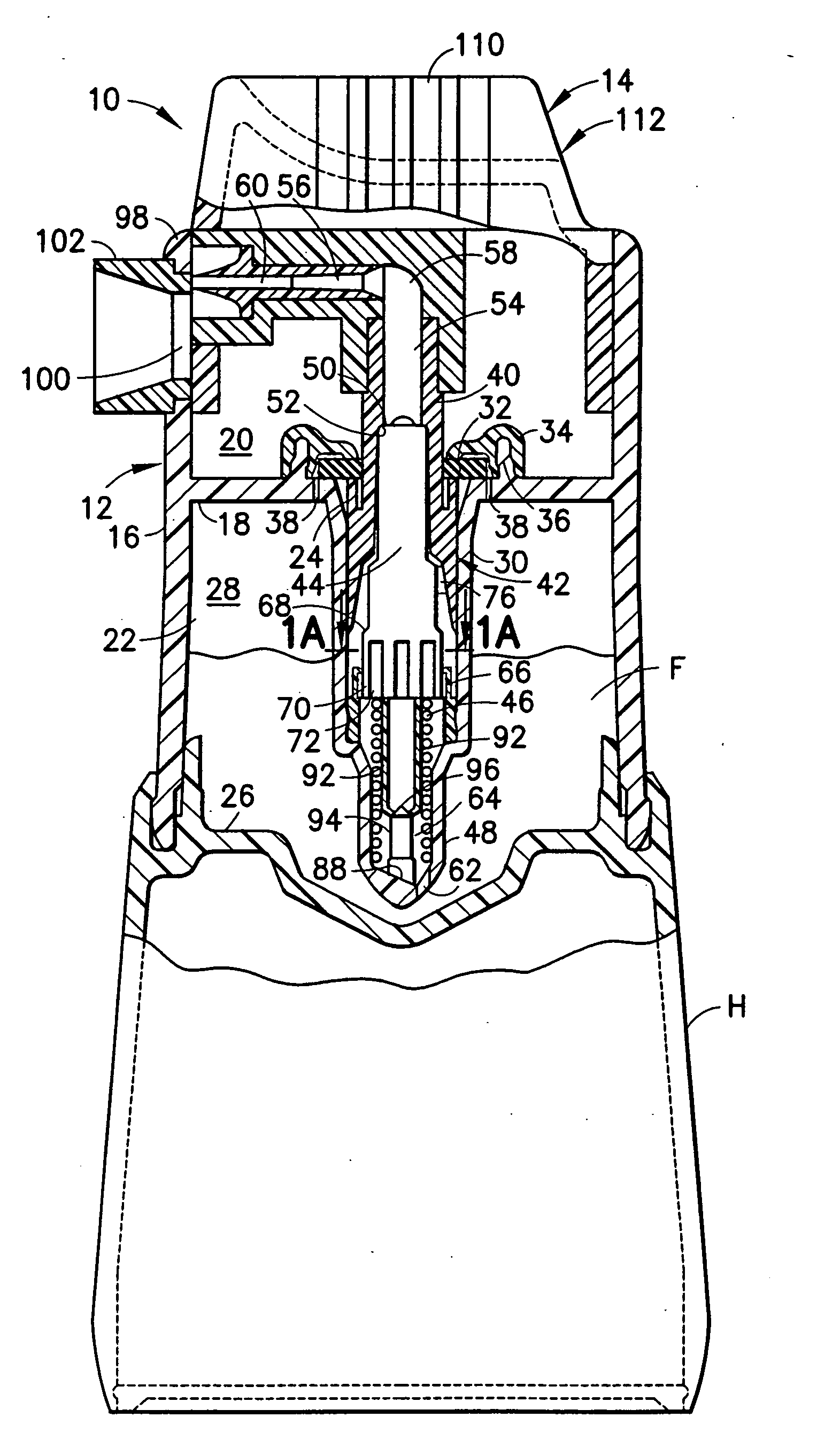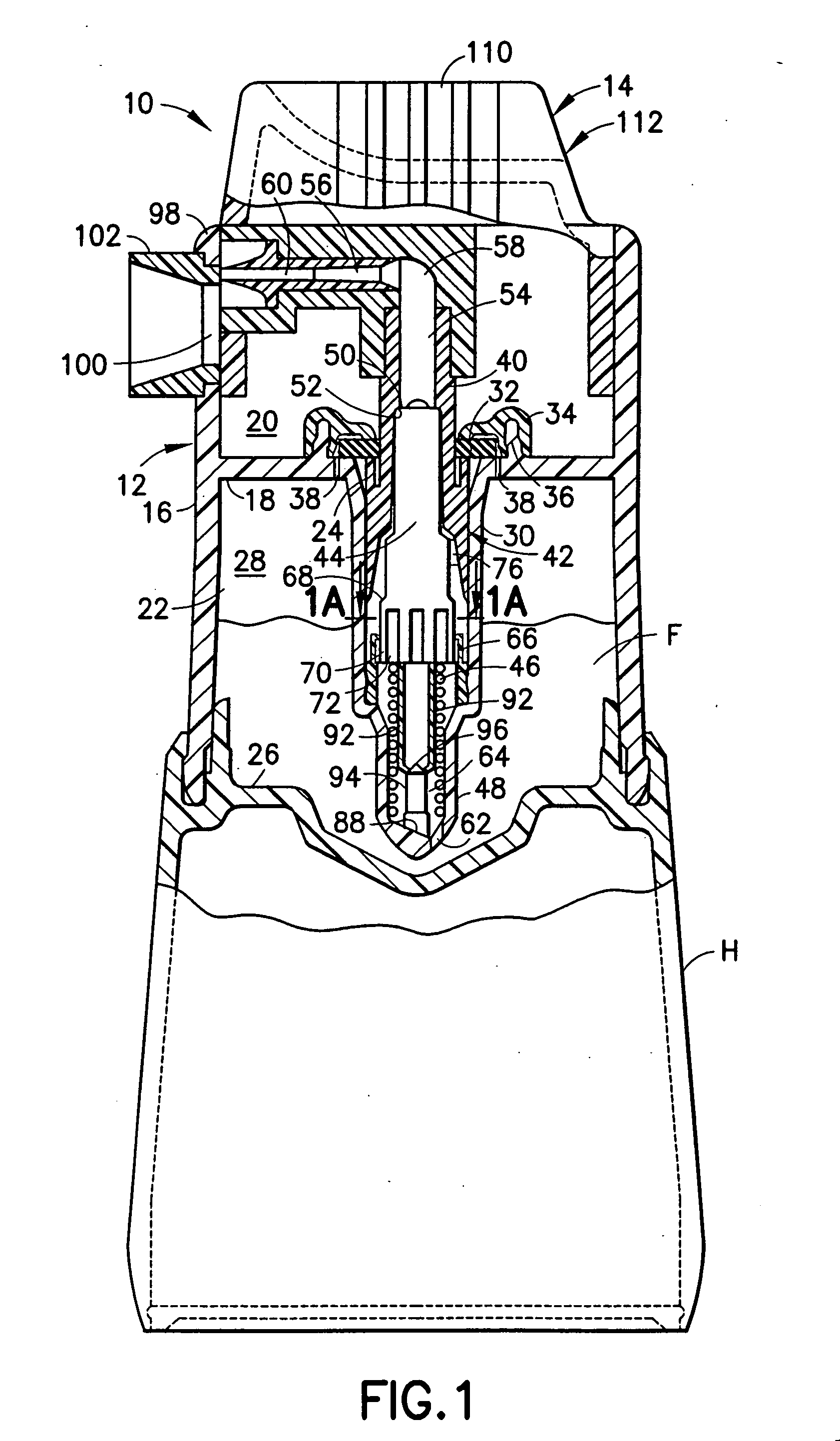Microdispensing pump
a pump and micro-dispensing technology, applied in the field of pumps, can solve the problem that the pump cannot be operated with sufficient force, and achieve the effect of convenient grip and clean pump
- Summary
- Abstract
- Description
- Claims
- Application Information
AI Technical Summary
Benefits of technology
Problems solved by technology
Method used
Image
Examples
Embodiment Construction
[0026] Referring to the FIGS., a pre-compression pump 10 is shown, along with various features thereof. The pump 10 generally includes a body 12, and a nozzle cap 14.
[0027] The body 12 is formed with a generally tubular outer wall 16 with a transverse web 18 which divides the body 12 into two chambers, an upper chamber 20 and a lower chamber 22, and a web opening 24 communicates the two chambers 20 and 22. The nozzle cap 14 is disposed in the upper chamber 20, whereas, the lower chamber 22 cooperates with a bottom wall 26 to define fluid reservoir 28. The bottom wall 26 may be detachable from the outer wall 16 so as to permit charging of fluid directly into the fluid reservoir 28.
[0028] A tubular cylinder 30 is mounted about the web opening 24 and extends into the fluid reservoir 28. As shown in FIG. 1, a rubber washer 32 is disposed over, and presses against, the cylinder 30. A holding member 34, disposed to engage and hold the rubber washer 32, is preferably snap-fitted onto an ...
PUM
 Login to View More
Login to View More Abstract
Description
Claims
Application Information
 Login to View More
Login to View More - R&D
- Intellectual Property
- Life Sciences
- Materials
- Tech Scout
- Unparalleled Data Quality
- Higher Quality Content
- 60% Fewer Hallucinations
Browse by: Latest US Patents, China's latest patents, Technical Efficacy Thesaurus, Application Domain, Technology Topic, Popular Technical Reports.
© 2025 PatSnap. All rights reserved.Legal|Privacy policy|Modern Slavery Act Transparency Statement|Sitemap|About US| Contact US: help@patsnap.com



